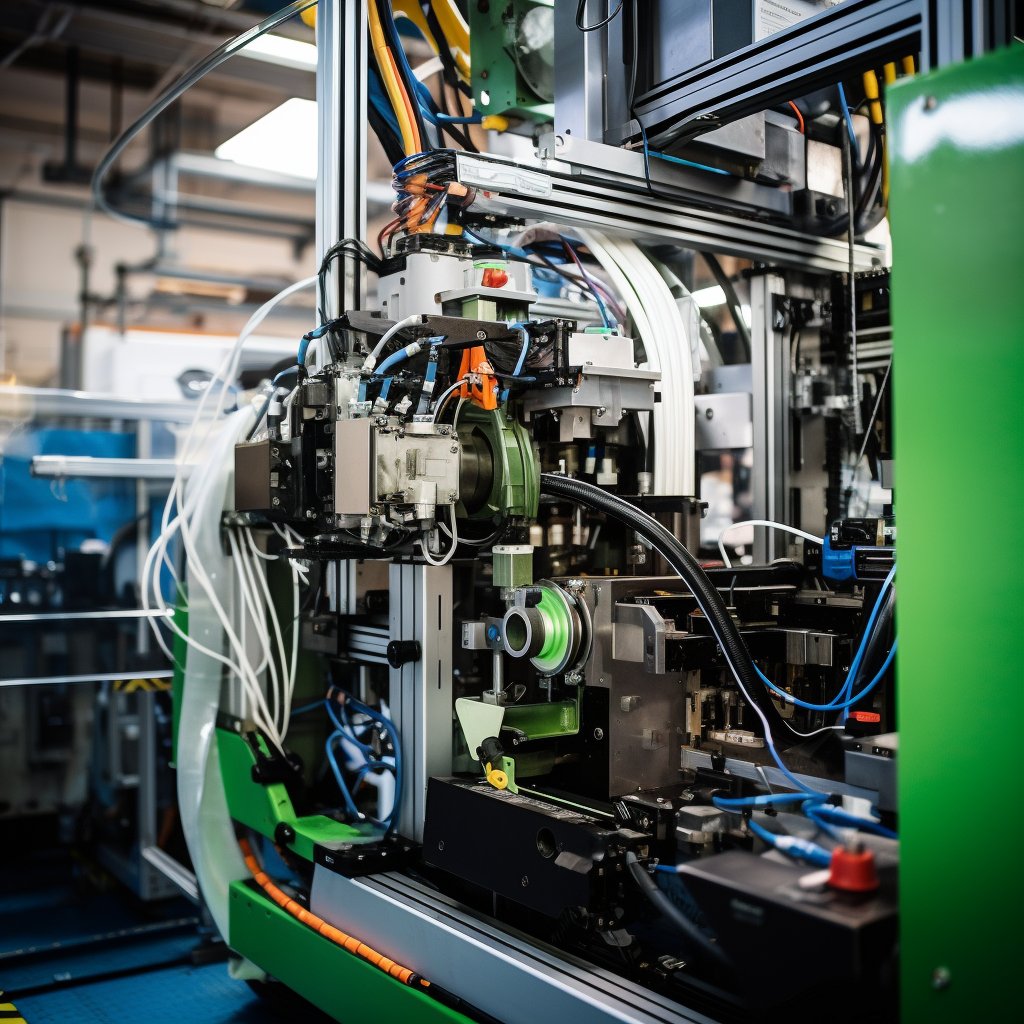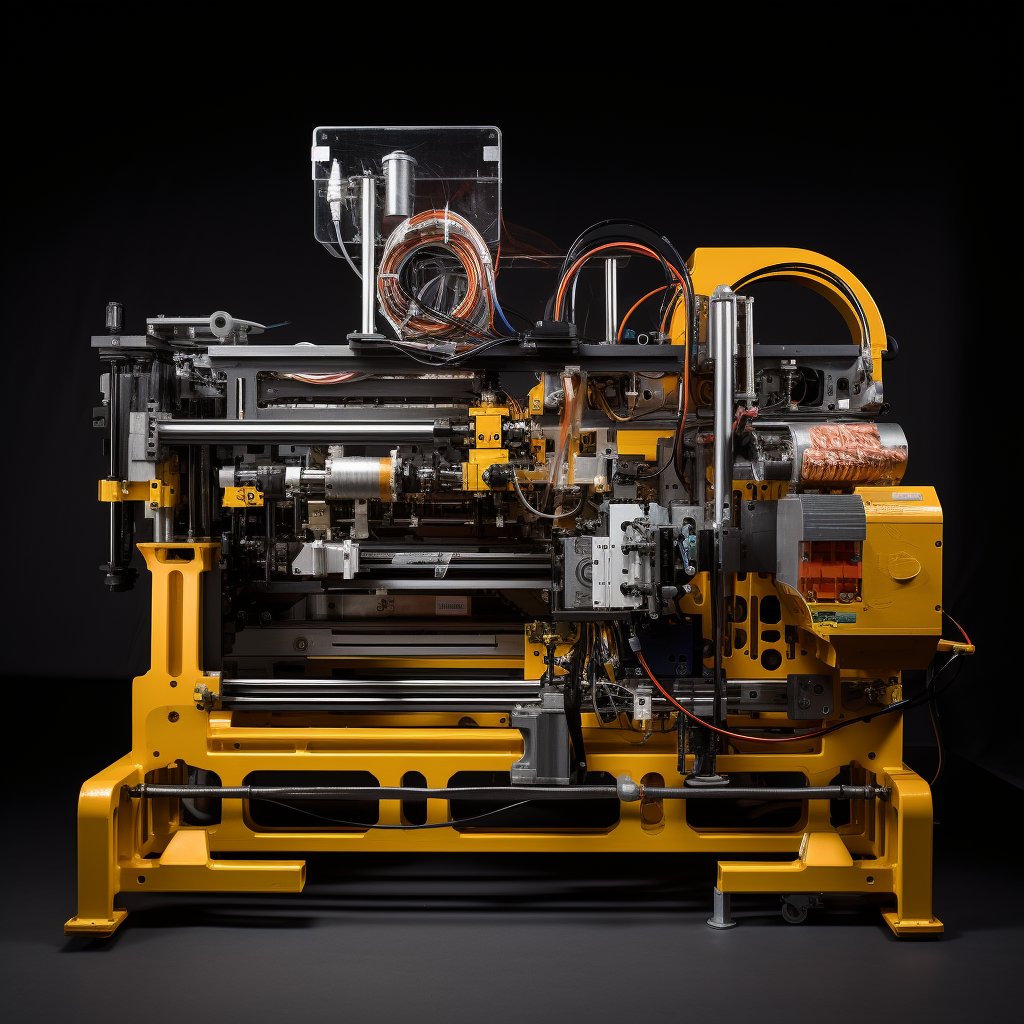Injection moulding is a popular manufacturing process in the plastics industry. It involves injecting molten plastic into a mould cavity, which cools and solidifies into the desired shape. This process can produce complex shapes with high precision and repeatability, making it ideal for mass production.
Injection moulding is a popular manufacturing process that plays a crucial role in the plastics industry. It involves injecting molten material into a mould to produce a product and has a range of applications across industries.
Types of injection moulding
There are several types of injection moulding techniques used in industrial settings, including:
- Conventional Injection moulding: This is the most commonly used injection moulding technique, where molten plastic is injected into a mould under high pressure. Once the plastic solidifies, the mould is opened, and the finished part is ejected.
- Multi-Shot Injection moulding: In this technique, two or more different materials are injected into the mould to create a finished product with multiple colours or fabrics.
- Gas-Assisted Injection moulding: This technique uses high-pressure nitrogen gas to hollow out parts, reducing the amount of plastic needed and improving the part’s strength.
- Micro Injection moulding: Used to produce small and precise parts, this technique requires highly specialised equipment to inject tiny amounts of plastic into tiny mould cavities.
Injection moulding is used to produce board components, door handles, and bumpers. In the medical industry, injection moulding is used to produce medical tubing, and implantable devices. In the packaging industry, injection moulding is used to produce caps, closures, and containers.
Consumer products such as toys, electronics, and household items also use injection moulding to produce their components. For example, Lego bricks, keyboards, and mobile phone cases are all made using injection moulding.
The choice of material used in injection moulding depends on the properties required in the finished product. Different materials have different characteristics, such as strength, durability, flexibility, and heat resistance.
Some common materials used in injection moulding include:
- Polypropylene (PP): This is a popular material for injection moulding due to its low cost, high flexibility, and resistance to heat and chemicals. It is commonly used to produce items such as packaging, containers, and automotive parts.
- Acrylonitrile Butadiene Styrene (ABS): This material is strong, rigid, and impact-resistant, making it ideal for producing consumer products such as toys and electronic housings.
- Polycarbonate (PC): This material is transparent, lightweight, and resistant to impact and heat, making it suitable for producing items such as lenses, medical equipment, and electronic components.
- Polyethylene (PE): This flexible and durable material commonly used for producing items such as bottles, bags, and toys.
Recycling is a growing trend in the plastics industry, and injection moulding can play a significant role in this. Manufacturers can reduce their environmental impact and promote sustainability by using recycled materials in the injection moulding process. The recycling process involves shredding used plastic products, melting them down, and then using them as raw material in the injection moulding process.
In conclusion, injection moulding is a versatile and efficient manufacturing process with various applications across various industries. Manufacturers can produce high-quality products with precise specifications by using different materials and techniques. With the growing focus on sustainability and recycling, injection moulding can play a crucial role in promoting a greener future for the plastics industry.

The impact of Injection moulding around the world
Injection moulding has significantly impacted the world, both environmentally and economically. While it has revolutionised the manufacturing process, it has also negatively affected the environment.
Environmental Impact:
- Plastic Waste: Injection moulding produces large amounts of plastic waste that can end up in landfills or oceans, causing harm to wildlife and the environment.
- Energy Consumption: The injection moulding process requires a significant amount of energy, contributing to carbon emissions and environmental pollution.
- Chemicals: Some chemicals used in the injection moulding process, such as phthalates and bisphenol A, have been linked to health issues and environmental damage.
- Recycling: While injection moulding has the potential to use recycled materials, the process is only sometimes economically viable or readily available.
Economic Impact:
- Mass Production: Injection moulding has enabled mass production, making it possible to produce large quantities of products quickly and efficiently.
- Cost-Effective: Injection moulding is a cost-effective manufacturing process, making it a popular choice for producing products across various industries.
- Job Creation: Injection moulding has created jobs in manufacturing, engineering, and design, contributing to economic growth in many countries.
- Innovation: Injection moulding has spurred innovation in product design, leading to the development of new products and technologies.
Overall, while injection moulding has had a significant economic impact, its environmental impact must be addressed. As consumers become increasingly aware of the need for sustainability, manufacturers are beginning to adopt more environmentally friendly practices, such as using recycled materials and minimising waste. With continued innovation and investment, injection moulding can continue contributing to economic growth while promoting a more sustainable future.
The Circular economy:
Injection moulding can play a crucial role in the recycling process, as it enables the creation of new products from recycled materials. By using recycled materials in the injection moulding process, manufacturers can reduce the amount of plastic waste in landfills or oceans, thereby reducing their environmental impact.
Furthermore, some companies have started adopting closed-loop systems, where they recycle their plastic waste and use it as raw material in the injection moulding process. This reduces waste and minimises the need for virgin plastic, which has a lower environmental impact.
The demand for sustainable products and practices is growing, and injection moulding can help meet this demand by enabling the production of products that are made from recycled materials or designed for recyclability. For example, some products can be designed with disassembly in mind, making it easier to recycle their components.
Injection moulding has the potential to be a powerful tool in promoting recycling and a circular economy. Manufacturers can reduce waste and minimise their environmental impact by using recycled materials and designing products with recyclability in mind. As the demand for sustainable products grows, injection moulding will play an increasingly important role in meeting this demand while promoting a more sustainable future.






